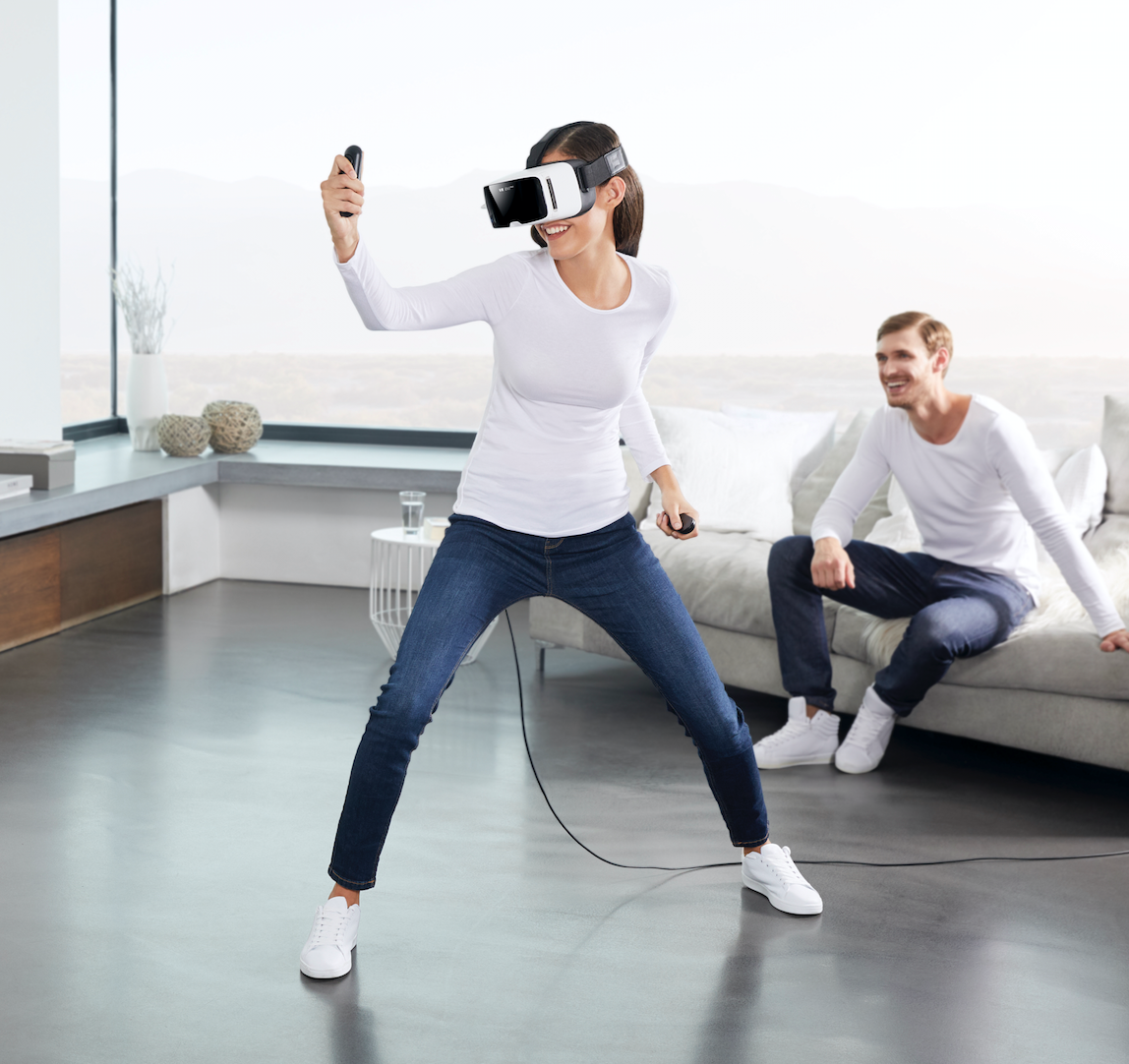Zeiss VR One Connect Brings SteamVR Support, Motion Controls To Mobile VR
Zeiss announced VR One Connect, which uses PXL Vision’s Beam VR platform to enable SteamVR support on mobile VR devices. The Zeiss VR One Connect includes two motion controllers and software used to tether your smartphone to your PC so you can play games typically meant for expensive, PC-connected VR systems. Zeiss' VR One Connect doesn't include a full-featured tracking system, but it's capable enough to play standing and seated VR games.
In late 2016, Zeiss announced that it would be expanding the capabilities of the VR One Plus headset to include spatial tracking technology developed by Dacuda. The companies weren’t forthcoming with details about the implementation, but we were promised a demo of the VR One headset at CES in January. We didn’t end up getting that demo, and in February, we found out why. Magic Leap purchased Dacuda’s intellectual property at the beginning of the year, presumably to use the company’s proprietary technology in the AR system it's developing behind closed doors.
After the deal with Dacuda fell through, Zeiss was left without access to the tracking technology it had planned to incorporate into the VR One headset. Shortly after Magic Leap purchased Dacuda, several Dacuda employees formed a new company called PXL Vision. PXL Vision revealed itself to the world last week with the announcement of the PXL Beam product stack, but the company started working with Zeiss months ago. Zeiss licensed PXL Vision’s PXL Beam VR IMU tracking technology to help create VR One Connect, which enables access to SteamVR content over a mobile smartphone-based VR Headset.
"This mobile solution is unparalleled in the VR space," said Franz Troppenhagen, senior product manager at ZEISS. "Now users can have access to games on SteamVR™ at a fraction of the cost of traditional desktop enabled systems, in addition to having access to traditional mobile VR apps and 360 video content.”
The Zeiss VR One Connect makes VR content more accessible by taking away the expense of a high-end VR system, such as a Vive or a Rift HMD, but it doesn’t negate the need for a VR-ready PC. The technology works by connecting your smartphone to your PC with a USB cable to deliver pre-rendered content to your phone’s display.
The Zeiss VR One Connect package features two motion controllers tracked with IMU sensors. PXL Vision said its PXL Beam VR technology can “simulate must of the functions of an HTC Vive” by combining the IMU data from the controllers with data from your smartphone's sensors. A Zeiss representative confirmed that the system doesn’t offer positional tracking, so room-scale games won’t work, but standing and seated VR titles should.
“The market demands that we bring VR from a niche market and make it available to the public, and that means providing entry-level solutions based on smartphones so that everyone can have access to this technology,” said Dave Hodgson, North America sales representative for ZEISS. “Our approach demonstrates that this is feasible, without compromising interactive gaming VR capabilities. ZEISS VR ONE Connect will further democratize the VR industry."
Get Tom's Hardware's best news and in-depth reviews, straight to your inbox.
The Zeiss VR One Connect controllers and software are compatible with iOS and Android smartphones. Zeiss would likely prefer that you purchase a VR One headset to go with the controllers, but you can use any HMD that includes a strap to keep it on your head.
The Zeiss VR One Connect package isn’t available yet, but Zeiss said that “major US retailers including Best Buy and GameStop” would begin selling the controllers in Q4 for $129.
Kevin Carbotte is a contributing writer for Tom's Hardware who primarily covers VR and AR hardware. He has been writing for us for more than four years.

